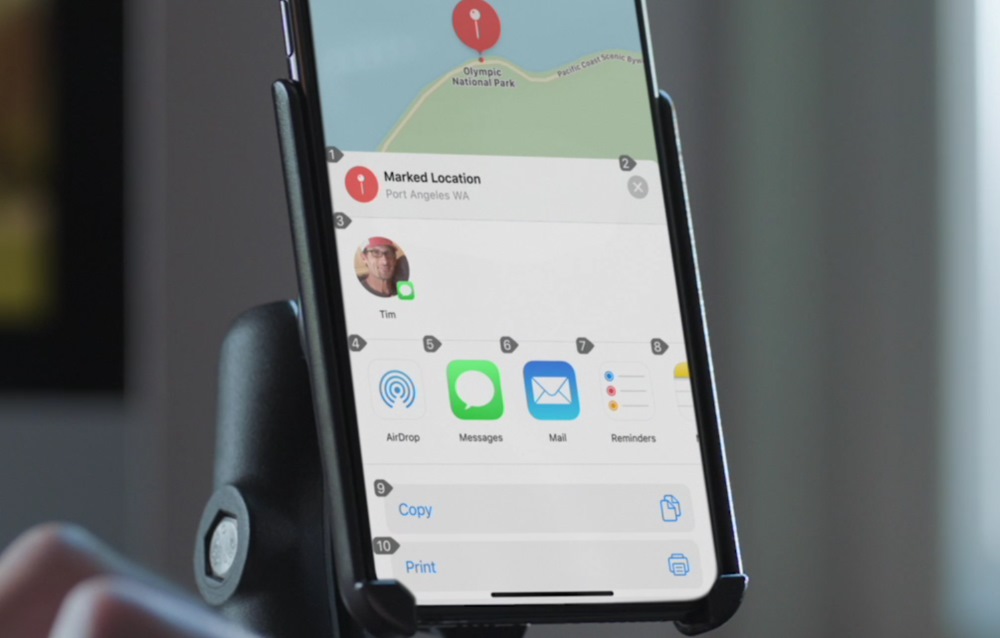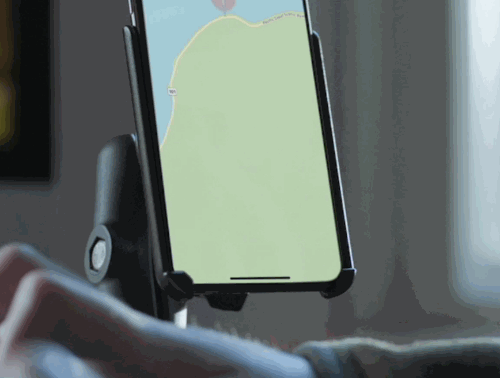In this blog you can visit new technology latest news about advance technology viral news latest andriod phones and much more visit this blog for more updates daily thanks
Monday, 3 June 2019
Apple’s updated TestFlight will let users submit feedback with a screenshot
Apple’s TestFlight app testing platform is getting an upgrade. With the new version of Xcode 11 announced this afternoon at Apple’s Worldwide Developer Conference, TestFlight apps will automatically enable user feedback. Now, when a user shares a screenshot from the Testflight app they’re trialing, they will have a new option to share it as beta feedback while also optionally adding their comments. The idea is to prompt more users to offer feedback, by making it more of built-in experience than before.
It’s also a feature found in the popular app feedback platform, Instabug.
Developers will be able to review all the feedback they receive on App Store Connect, and can download the details for later reference.
The update, while minor, could allow developers to catch more bugs and other issues during the user testing process before launching their app to the wider public on the iOS App Store. And for the end user, it simplifies the process of testing apps and giving feedback — something in the past they may have neglected to do since it may have required filling out a form or emailing the developer directly.
The change was one of two updates related to app feedback announced today.
Additionally, when users opt into sharing, app developers will also receive anonymized metrics for battery life, launch time, and memory leaks. These will be aggregated and display in the organizer next to the crash and energy use metrics, and are meant to offer developers another way to monitor and improve their app’s performance.
Apple notes that it actually began collecting these aggregated metrics this spring with iOS 12.2, so many apps will already have this data available.
from Apple – TechCrunch https://tcrn.ch/2WF85zD
Meet Apple’s secret weapon for keeping Wall Street happy
Apple has been shifting their business strategy over the past couple years to push the revenues earned from top customers higher and higher, but if you thought a $999 starting price for the iPhone XS was bold, Apple announced earlier today that they’re selling the freaking stand for the display of their new Mac Pro for $999.
As the price of the stand was announced as an aside towards the end of the WWDC keynote, audible murmurs broke out in the crowd visibly catching the presenter off-guard and causing him to lose his train of thought.
The company’s new Mac Pro starts at $5,999, which is incredibly pricey but ultimately it’s a machine that hit plenty of the high-points that the company’s power users were hoping for. The company’s $4,999 Pro Display XDR also hits some high points though its pricing might raise your eyebrows a bit more, but then you find out that the stand doesn’t even come with the freaking thing, and it’s $999.
Surely something with this kind of price tag can do something other than hold up the display! It can, you can also swivel the display 90 degrees much like you can on your $89 ViewSonic.
Apple sees the professional market as a cash cow with non-existent price sensitivities and as its device sales stall this could be a great market to seize, but, come on, this is a pretty egregious middle-finger to professional customers. You can buy a display that matches the Pro Display XDR on many — but not all — fronts and it will cost less than this stand.
from Apple – TechCrunch https://tcrn.ch/2QExbcg
Apple’s Voice Control improves accessibility OS-wide on all its devices
Apple is known for fluid, intuitive user interfaces, but none of that matters if you can’t click, tap, or drag because you don’t have a finger to do so with. For users with disabilities the company is doubling down on voice-based accessibility with the powerful new Voice Control feature on Macs and iOS (and iPadOS) devices.
Many devices already support rich dictation, and of course Apple’s phones and computers have used voice-based commands for years (I remember talking to my Quadra). But this is a big step forward that makes voice controls close to universal — and it all works offline.
The basic idea of Voice Control is that the user has both set commands and context-specific ones. Set commands are things like “Open Garage Band” or “File menu” or “Tap send.” And of course some intelligence has gone into making sure you’re actually saying the command and not writing it, like in that last sentence.
But that doesn’t work when you have an interface that pops up with lots of different buttons, fields, and labels. And even if every button or menu item could be called by name, it might be difficult or time-consuming to speak everything out loud.
To fix this Apple simply attaches a number to every UI item in the foreground, which a user can show by saying “show numbers.” Then they can simply speak the number or modify it with another command, like “tap 22.” You can see a basic workflow below, though of course without the audio cues it loses a bit:
Remember that these numbers may be more easily referenced by someone with little or no vocal ability, and could in fact be selected from using a simpler input like a dial or blow tube. Gaze tracking is good but it has its limitations, and this is a good alternative.
For something like maps, where you could click anywhere, there’s a grid system for selecting where to zoom in or click. Just like Blade Runner! Other gestures like scrolling and dragging are likewise supported.
Dictation has been around for a bit but it’s been improved as well; You can select and replace entire phrases, like “Replace ‘be right back’ with ‘on my way.’ ” Other little improvements will be noted and appreciated by those who use the tool often.
All the voice processing is done offline, which makes it both quick and robust to things like signal problems or use in foreign countries where data might be hard to come by. And the intelligence built into Siri lets it recognize names and context-specific words that may not be part of the base vocabulary. Improved dictation means selecting emoji and adding dictionary items is a breeze.
Right now Voice Control is supported by all native apps, and third party apps that use Apple’s accessibility API should be able to take advantage of it easily. And even if they don’t do it specifically, numbers and grids should still work just fine, since all the OS needs to know are the locations of the UI items. These improvements should appear in accessibility options as soon as a device is updated to iOS 13 or Catalina.
from Apple – TechCrunch https://tcrn.ch/2Km8fVQ
iOS 13 will let you bypass the App Store download cap when on a cellular connection
Just a few days ago, Apple bumped up the limit on how big of an app you can download from the App Store while on a cellular connection, increasing it from 150MB to 200MB. As we noted at the time, it’s always seemed a bit silly that there was no way to acknowledge the file size and bypass the limit — to effectively say “Yeah, yeah, I know. Let me download it anyway.”
Looks like Apple agrees.
As spotted by 9to5Mac, iOS 13 (or, at least, the just-released developer beta version of iOS 13) gives you the option to download large apps over cellular should you choose to do so. Whether you’ve got the monthly bandwidth to spare or you just need a big ol’ monster app/update now (lack of WiFi be damned), iOS 13 seems much more willing to get out of your way.
A new screen in the settings menu reveals three options:
- Always allow
- Ask if over 200 MB
- Ask first (prompting you to make sure you know you’re on a cell connection, even if the download is under 200 MB)
The prompt also offers to hold off a large download for now, automatically downloading it the next time you’re on WiFi.
iOS 13 shipped as a private developer beta today. The public beta is expected to roll out in July, with a full release sometime this fall.
from Apple – TechCrunch https://tcrn.ch/2WlNrFs
Apple restricts ads and third-party trackers in iPhone apps for kids
Apple has told developers to stop including third-party trackers in apps designed for kids — or they face having their apps pulled from the app store.
The tech giant quietly updated its guidelines for apps that are submitted to the app store’s kids category following the keynote address at its annual developer conference on Monday.
“Apps in the kids category may not include third-party advertising or analytics,” the new guidelines say. Previously, the guidelines only restricted behavioral advertising tracking.
Apple also currently prohibits apps in the kids category from including links that point outside the app or contain in-app purchasing.
Apple has come under fire for its recent marketing campaign claiming “what happens on your iPhone stays on your iPhone,” which critics say is misleading. All too often apps include ads or tracking code that allows app makers to collect information about the device, including its location and other data, and send it back to base so companies can better target its users with ads, learn more about how you use the app, and more.
Just last week, the Washington Post found over 5,400 app trackers were uploading data from an iPhone over a single week — even at night when the phone owner was asleep.
As a TechCrunch investigation earlier this year found, some apps use so-called session replay technology, a kind of analytics software that records the screen when an app is open. Apps built by Expedia, Hollister and Hotels.com were found in violation of Apple’s rules and developers were told to remove the code.
Apple follows in the footsteps of Google, which last week set out new policies around kids’ apps available for Android through Google Play. The move came following a complaint by the Federal Trade Commission filed by close to two-dozen consumer advocacy groups, which accused the mobile giant of not ensuring app compliance with federal children’s privacy laws.
Now with Apple’s new restrictions, at least kids have a fighting chance of keeping their iPhone data private.
from Apple – TechCrunch https://tcrn.ch/315r1XF


